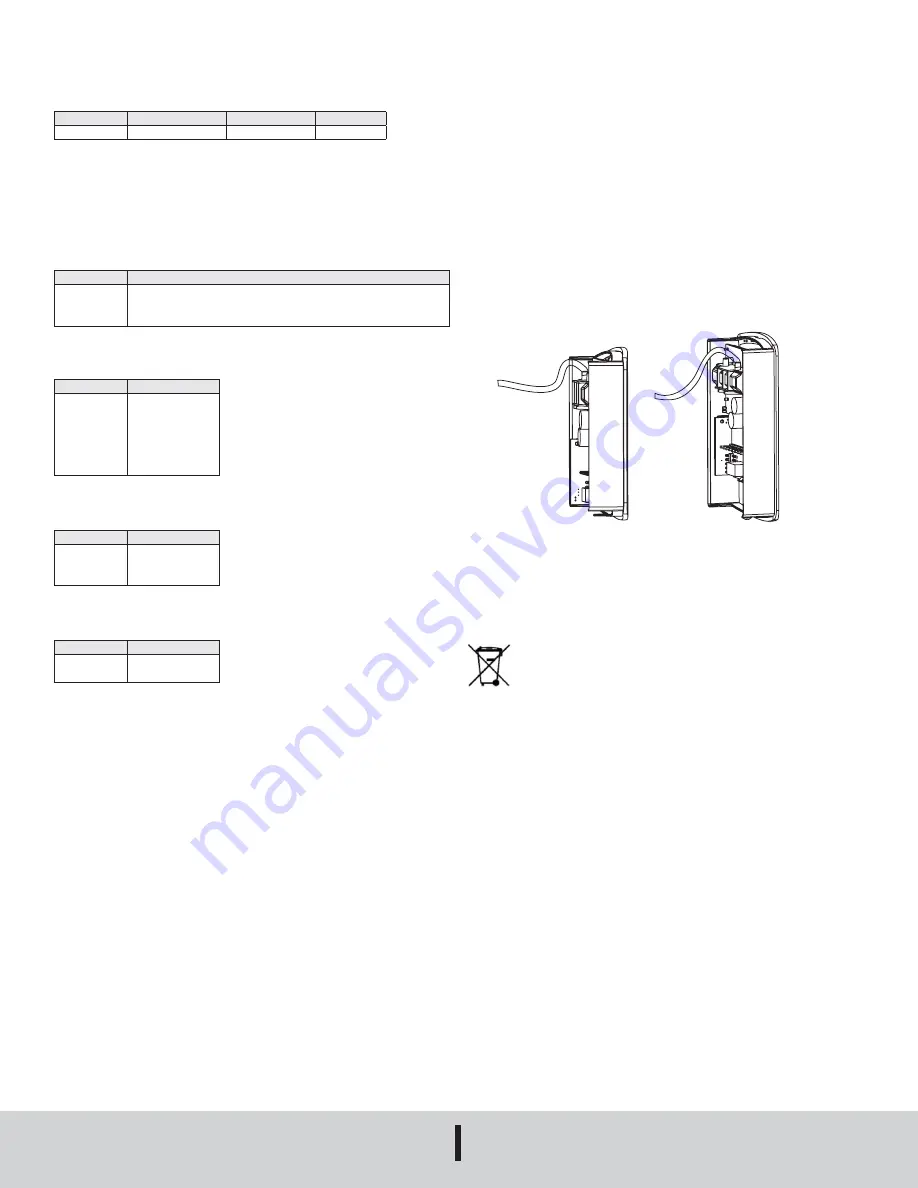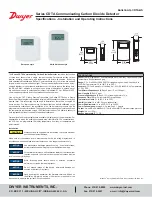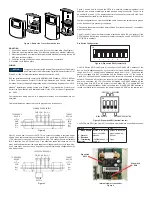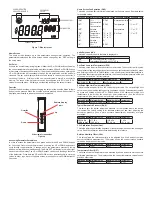
Printed in U.S.A. 3/19
FR# 444131-00 Rev. 2
©Copyright 2019 Dwyer Instruments, Inc.
DWYER INSTRUMENTS, INC.
P.O. BOX 373 • MICHIGAN CITY, INDIANA 46360, U.S.A.
Phone: 219/879-8000
Fax: 219/872-9057
www.dwyer-inst.com
e-mail: info@dwyermail.com
CO2 Offset (OFC)
This value allows the CO
2
Concentration to be adjusted by a fixed amount to match
another calibrated measurement. The display shows the current CO
2
concentration
value plus any previous offset value.
Auto Serial Configuration (AUT)
This value enables or disables the automatic baud rate detection. If the device fails
to communicate on the MS/TP bus or the serial configuration is not 8 data bits, no
parity and 1 stop bit, then this value should be set to “OFF”, and the serial configured
manually.
Baud Rate (BAU)
This value provides the selection of the desired serial baud rate. This value is only
visible when the value of AUT is “OFF”.
Parity Selection (PAR)
This value provides the selection of the desired serial parity. This value is only visible
when the value of AUT is “OFF”.
Stop Bits Selection (STP)
This value provides the selection of the desired serial stop bits. This value is only
visible when he value of AUT is “OFF”
Reset To Factory Defaults (RST)
This value, when set to “YES”, will reset all user settings to their default values and
reset the device. This applies to all settings including BACnet writable settings.
Calibrating Sensor
Step 1: Remove the cover as shown in Figure 1.
Step 2: Remove one of the gas nipple covers on the CO
2
sensor and attach tubing
from the gas pressure regulator to the nipple (See Figure 5).
Step 3: Attach the terminal block accessory to the circuit board so that the power wires
line up with terminals 1 and 2. Plug in the power supply to power up the
transmitter.
Step 4: Hold housing so that the sensor is in the vertical plane as shown in Figure 5.
Step 5: Follow the steps in the accessing parameter section to access the calibration
parameter (CAL).
Step 6: Press and hold the Up and Down arrows for 3 seconds.
Step 7: Flow zero reference gas at 0.3 SLPM for 5 minutes.
Step 8: Press and hold the Down button for 0.5 seconds.
Step 9: Flow the full scale reference gas at 0.3 SLPM for 5 minutes.
Step 10: Press and hold the Up button for 0.5 seconds.
Step 11: Exit the parameter menu.
Step 12: Disconnect the power supply from the power source and remove the terminal
block from the circuit board.
Step 13: Remove tubing from sensor and re-attach the gas nipple cover to the sensor.
Step 14: Re-attach the cover to the back plate.
MAINTENANCE/REPAIR
Upon final installation of the Series CDTA, no routine maintenance is required. The
Series CDTA is not field serviceable and should be returned if repair is needed. Field
repair should not be attempted and may void warranty.
WARRANTY/RETURN
Refer to “Terms and Conditions of Sale” in our catalog and on our website. Contact
customer service to receive a Return Goods Authorization number before shipping the
product back for repair. Be sure to include a brief description of the problem plus any
additional application notes.
Default Value Minimum Value
Maximum Value Increment
0 PPM
-500 PPM
500 PPM
1 PPM
Setting Value Description
“ON”
“OFF
Auto baud enabled, assumes 8 data bits, no parity and 1 stop bit
Auto baud disabled, serial baud rate, parity, and stop bits must be
set manually
Setting Value Baud Rate (BPS)
9.6 K
19.2 K
38.4 K
57.6 K
76.8 K
115.2 K
9600
19,200
38,400
57,600
76,800
115,200
Setting Value Description
“NON”
“EVE”
“ODD”
No Parity
Even Parity
Odd Parity
Setting Value Description
1
2
One Stop Bit
Two Stop Bits
Figure 9: Calibration
European
North American
This symbol indicates waste electrical products should not be disposed
of with household waste. Please recycle where facilities exist. Check with
your Local Authority or retailer for recycling advice.






















